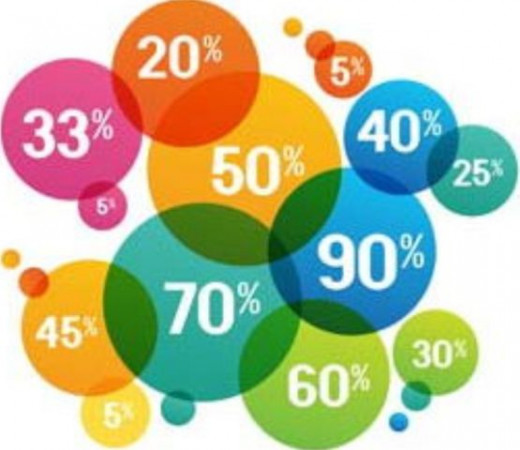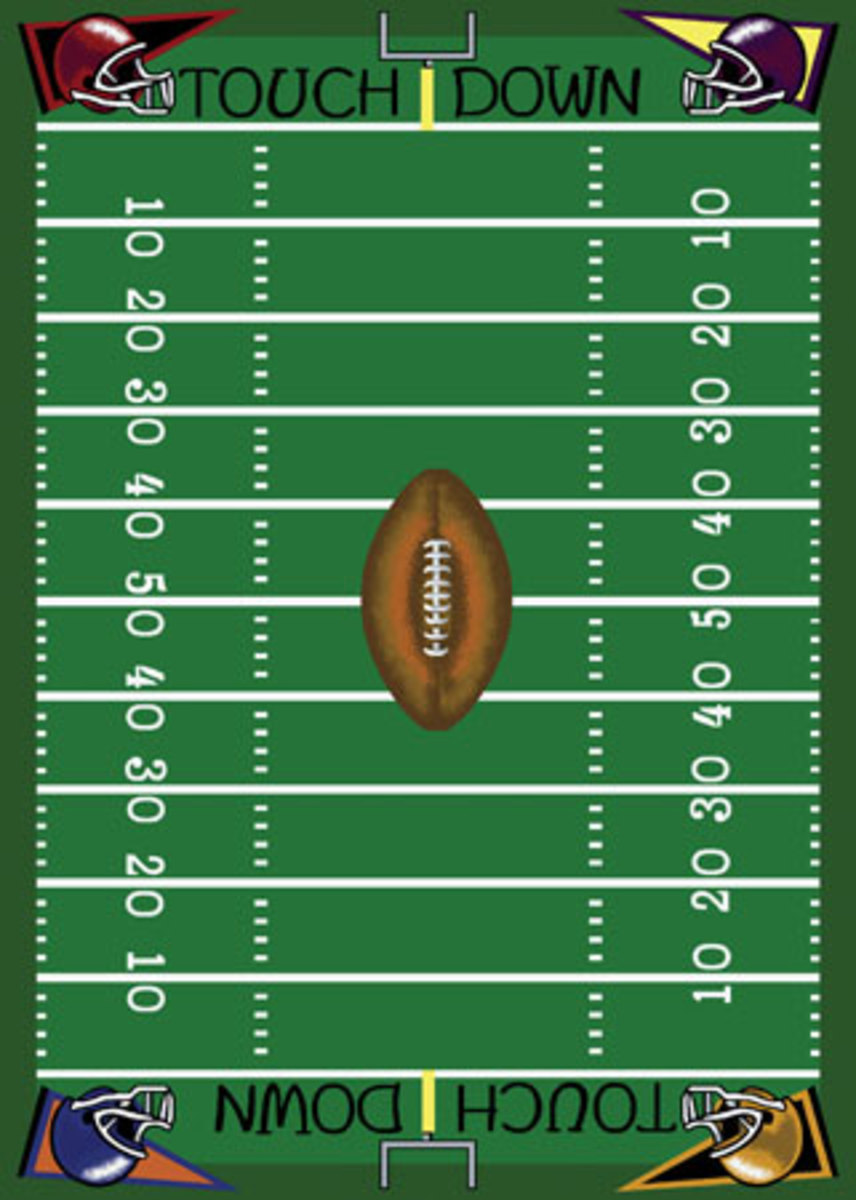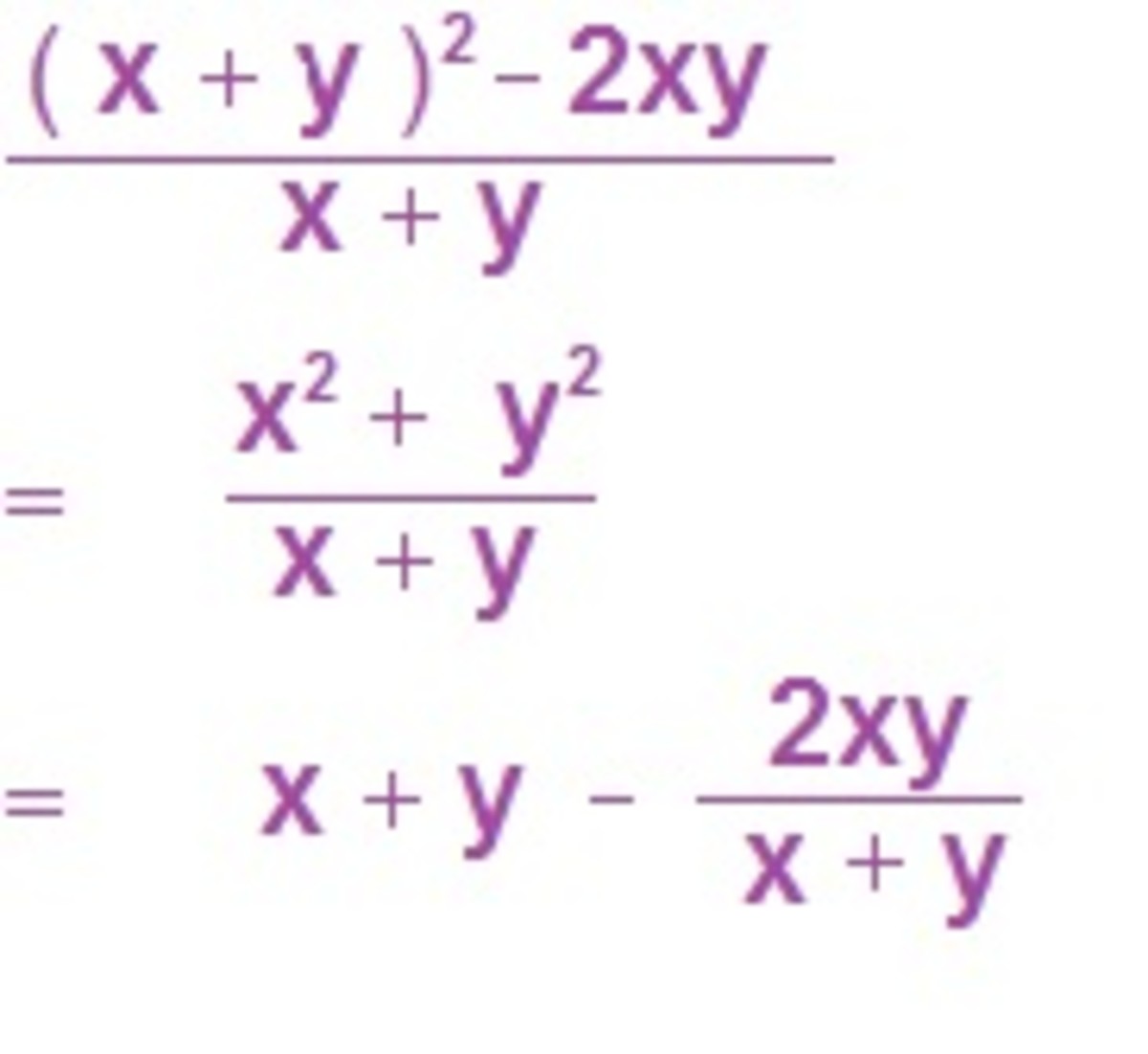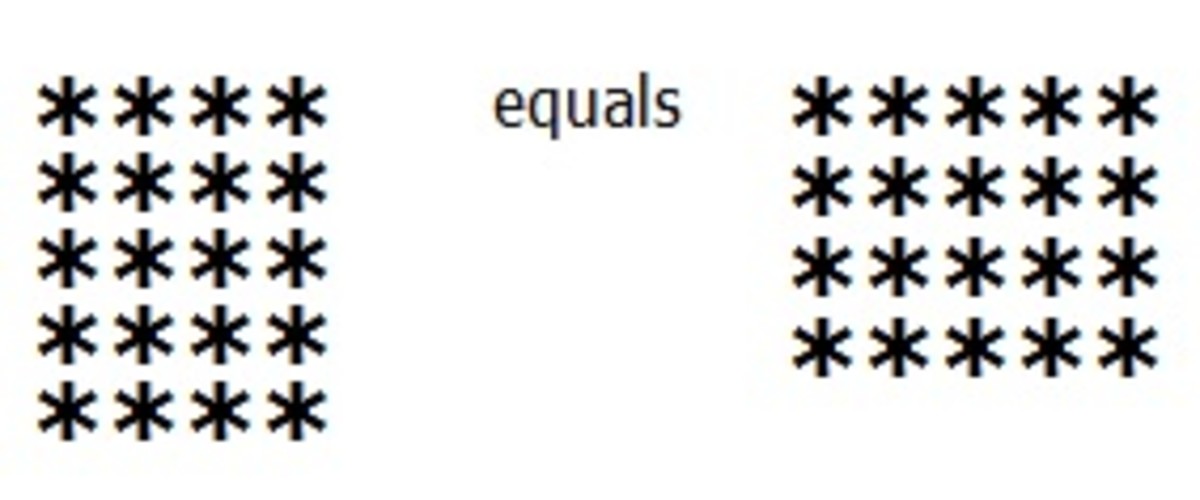Percent (%) Made Easier

Introduction
Percent (%) or Percentage (%) calculations are sometimes avoided by those who are more adept at or more predisposed towards other non-numbers subjects.
But the reality is that percents can be calculated by various methods without understanding the math behind the eventual answer.
Non-number cruncher folk should choose a method that they are comfortable with and use it with confidence.
Every mobile phone or cellphone contains a calculator, and conversion applications (apps) abound, so there is really no need to revert to pen-'n'-paper methods for calculating almost anything. However, for a single calculation or conversion the pen-'n'-paper or the in-the-mind calculation or conversion is favored because it is more swift.
Percent, or more correctly, per cent, is a term that means per century or per 100.
It divides an amount of something in question into an imaginary 100 parts.
Then we can state part-reductions, for example in sales, or part-increases, for example in pay rises, with some ease, without referring to the exact or absolute amount.
Percent works on any amount of anything whether currency, weights, liquids, areas, sizes, thicknesses, or anything that can be considered a quantity or a quality.
Demonstrating with examples is a good way of explaining the methods.
Method 1
Method 1
Write out the percent amount as a fraction (i.e. amount/100).
Convert, mathematically, the percent-fraction amount into a decimal fraction.
A decimal fraction is using a decimal point instead of a ‘ / ’ e.g. 0.5 instead of ½ or 1/2.
E.G.1 That dress that you like has a 25% reduction. What is the new price?
Original price ($£¥) 80
Sale price 25% off
New price is 80 – (80 x 25 / 100) = 80 – (80 x 0.25) = 80 – 20 = 60
E.G.2 That drill that you like has a 15% reduction. What is the new price?
Original price ($£¥) 60
Sale price 15% off
New price is 60 – (60 x 15 / 100) = 60 – (60 x 0.15) = 60 – 9 = 51
E.G.3 You will receive a 3% salary increase. What is your new salary?
Original salary ($£¥) 20,000
Salary increase 3%
New salary = 20,000 + (20,000 x 3 / 100) = 20,000 + (20,000 x 0.03) = 20,000 + 600 = 20,600
Method 2
Know, automatically, in your mind, the conversion of percent into a decimal fraction.
Use the percent amount as a decimal fraction.
A decimal fraction is using a decimal point instead of a ‘ / ’ e.g. 0.5 instead of ½ or 1/2.
E.G.1 That dress that you like has a 25% reduction. What is the new price?
Original price ($£¥) 80
Sale price 25% off
New price is 80 – (80 x 0.25) = 80 – 20 = 60
E.G.2 That drill that you like has a 15% reduction. What is the new price?
Original price ($£¥) 60
Sale price 15% off
New price is 60 – (60 x 0.15) = 60 – 9 = 51
E.G.3 You will receive a 3% salary increase. What is your new salary?
Original salary ($£¥) 20,000
Salary increase 3%
New salary = 20,000 + (20,000 x 0.03) = 20,000 + 600 = 20,600

Method 3
Know the common percentages as fractions.
Then multiply the amount by the top line value (the numerator), if it is not 1, and...
Then divide the answer by the bottom line (the denominator).
Or vice versa, whichever is easier, depending on the amount in question.
E.G.1 75% is ¾ so multiply by 3 and divide the answer by 4 (or vice versa, whichever is easier).
66.6% is 2/3 so multiply by 2 and divide the answer by 3 (or vice versa, whichever is easier).
50% is ½ so divide by 2 (there is no need to multiply by 1).
33.3% is 1/3 so divide by 3 (there is no need to multiply by 1).
25% is ¼ so divide by 4 (there is no need to multiply by 1).
And so on... 7/8 , 5/8 , 3/8 , 1/8 , and any other common or recurring fractions in your daily work or life.
N.B.1 The phrase ‘or vice versa, whichever is easier’ stems from the fact that, for example, if the quantity in question is 8 then, to obtain ¾, it is easier to ÷ by 4 and then x by 3 (8/4=2 then x 3 = 6)
than it is to x by 3 and then ÷ by 4.
Method 4
Know the easy way to convert percent 10's whole numbers.
10% = 1/10
1/10 is obtained from an amount by moving the decimal point one digit place to the left.
E.G. 1/10 of 50 (or 50.0) is 5 or 5.0
20% = 2/10
2/10 is obtained from an amount by moving the decimal point one digit place to the left and then multiplying that amount by 2.
E.G. 2/10 of 50 is 5 x 2 = 10
OR 2/10 of 50.0 is 5.0 x 2 = 10.0
and similarly for 30% 40% 50% 60% 70% 80% 90%
30% = 3/10 = 1/10 value x 3 = 5 x 3 = 15
40% = 4/10 = 1/10 value x 4 = 5 x 4 = 20
50% = 5/10 = 1/10 value x 5 = 5 x 5 = 25
60% = 6/10 = 1/10 value x 6 = 5 x 6 = 30
70% = 7/10 = 1/10 value x 7 = 5 x 7 = 35
80% = 8/10 = 1/10 value x 8 = 5 x 8 = 40
90% = 9/10 = 1/10 value x 9 = 5 x 9 = 45
E.G.1 .That dress that you like has a 20% reduction. What is the new price?
Original price ($£¥) 80
Sale price 20% off
New price is as follows...
10% is 80/10 = 8
20% is 8 x 2 = 16
The new price is then 80 – 16 = 64

Method 5
Know the easy way to convert percent 5's whole numbers.
15% = (10% + 5%) = 1/10 value + (half 1/10 value)
1/10 is obtained, as earlier, from an amount by moving the decimal point one digit place to the left.
So 1/10 of 50 is 5
Half of 1/10 is half of that value obtained in the line above
So half of 5 = 2.5
So 15% of 50 = 5 + 2.5 = 7.5
and similarly for 25%, 35%, 45%, 55%, 65%, 75%, 85%, 95%.
25% = (20% + 5%) = (1/10 value x 2) + (half 1/10 value) = (5 x 2) + 2.5 = 10 + 2.5 = 12.5
35% = (30% + 5%) = (1/10 value x 3) + (half 1/10 value) = (5 x 3) + 2.5 = 15 + 2.5 = 17.5
45% = (40% + 5%) = (1/10 value x 4) + (half 1/10 value) = (5 x 4) + 2.5 = 20 + 2.5 = 22.5
55% = (50% + 5%) = (1/10 value x 5) + (half 1/10 value) = (5 x 5) + 2.5 = 25 + 2.5 = 27.5
65% = (60% + 5%) = (1/10 value x 6) + (half 1/10 value) = (5 x 6) + 2.5 = 30 + 2.5 = 32.5
75% = (70% + 5%) = (1/10 value x 7) + (half 1/10 value) = (5 x 7) + 2.5 = 35 + 2.5 = 37.5
85% = (80% + 5%) = (1/10 value x 8) + (half 1/10 value) = (5 x 8) + 2.5 = 40 + 2.5 = 42.5
95% = (90% + 5%) = (1/10 value x 9) + (half 1/10 value) = (5 x 9) + 2.5 = 45 + 2.5 = 47.5
Method 6
Understand the reciprocal property of percentages.
That is, the 2 figures can be reversed to obtain the same answer.
This method can often simplify calculations.
E.G.1 8% of 25 will take a little math to calculate.
Interestingly, reversing the two numbers to calculate 25% of 8 will produce the same answer.
Because 25% of anything is easier to calculate i.e. ÷ by 4 or /4 then 25% of 8 is 2.
Hence 8% of 25 is also 2
E.G.2 15% of 50% (calculated above)
Is actually the same as 50% of 15
Because 50% is known as a half,
Then half of 15 is 7.5
So 7.5 is also 15% of 50.
Finding Percentages
E.G.1 What is 20 as a percentage of 30
20 / 30 x 100 = 0.6667 x 100 = 66.67
So 20 is 66.67% of 30
E.G.2 What is 30 as a percentage of 20
30 / 20 x 100 = 1.5 x 100 = 150
So 30 is 150% of 20
E.G.3 After a 10% pay rise, your salary is now ($£¥) 22 per hour. What was your original salary?
($£¥) 22 = 110% (obtained from 100% + 10%)
So 22 / 110 x 100 = 20
So your salary was originally ($£¥) 20 per hour
For any other amounts, substitute the new numbers into the above equations.
© 2020 Stive Smyth








